Abscess Drainage
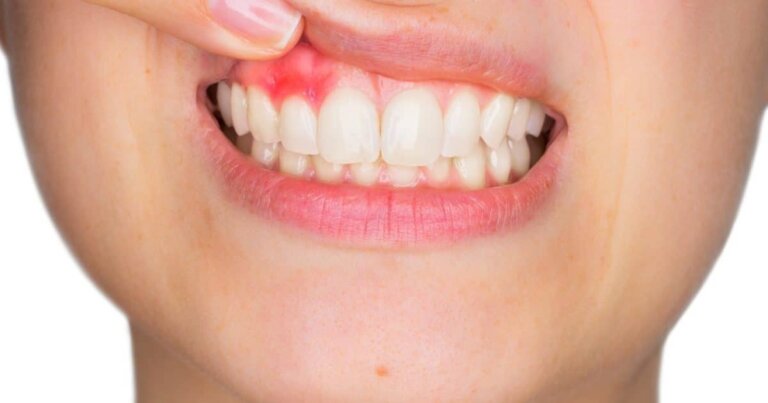
What Is Abscess Drainage?
A Dental Abscess often appears as a painful swelling in the gums, cheek, or area near an affected tooth. It is a painful collection of pus originating from a single tooth or multiple teeth or surrounding gum and bone. It is typically caused by a bacterial infection, which can spread to the surrounding gum and bone. Dental abscesses can even be fatal if not properly treated, making it important to seek prompt dental care if you suspect you may have one.
Abscess Drainage, also called Incision & Drainage, involves removing the accumulated pus and infected material from the abscess site. This not only provides relief from pain and pressure but also facilitates the body’s natural healing process by eliminating the source of infection. The dentist will administer local anesthesia to numb the area, then make a small incision at the site of the abscess, allowing drainage of pus and infection. This process not only relieves pain but also aids in reducing inflammation, promoting faster healing.
Timely treatment of an oral abscess and its drainage is crucial to prevent the infection from worsening. If left untreated, the infection can spread to other parts of the body, leading to serious health issues. Before deciding on whether Abscess Drainage are right for you, there are some things you should know:
- Who Needs Abscess Drainage?
- What Are The Advantages Of Abscess Drainage?
- What Are The Risks If I Do Not Get An Abscess Drained?
- What Are The Alternative Treatments If I Do Not Choose Abscess Drainage?
- How Much Does Abscess Drainage Cost?
- What Are The Steps In The Abscess Drainage Procedure?
- Can I Have Abscess Drainage If I Am Pregnant?
- What Are Common Problems With Getting An Abscess Drained?
If you have any further questions about Abscess Drainage or other dental services offered at Atlas Dental, please contact us.

Free phone consultation
Have questions about a dental abscess? Schedule a free phone consultation with our Toronto dentist.

5 star google reviews
See for yourself why more and more people are choosing our dental office for dental abscess treatment.

Emergency dental care
Have a dental abscess in Toronto and think you need it drained? Book online for same day exam and treatment.
Who Needs Abscess Drainage?
An oral abscess can affect anyone, regardless of age or oral hygiene practices. It typically arises from an untreated bacterial infection from a cavity or failed root canal treatment and can cause significant discomfort and potential complications. Knowing the signs that indicate the need for abscess drainage is crucial for seeking timely treatment:.
- Severe Tooth Pain: One of the primary indicators that you may need abscess drainage is the presence of severe and persistent pain. The pressure caused by the accumulated pus can lead to intense pain that may radiate to other areas of the face and head.
- Swelling: A noticeable swelling in the affected area, such as the gum, cheek, or jaw, is a clear sign of an oral abscess. The swelling is often accompanied by redness and inflammation.
- Fever and Malaise: An oral abscess can trigger systemic symptoms such as fever, chills, and a general feeling of illness. These symptoms suggest that the infection has spread beyond the localized area.
- Difficulty Swallowing or Breathing: In some cases, a particularly large or rapidly growing abscess can cause difficulty in swallowing or breathing due to the pressure it exerts on the surrounding tissues.
- Bad Taste or Bad Breath: An unpleasant taste or odor in the mouth, often accompanied by the discharge of foul-smelling pus, can indicate the presence of an abscess.
- Localized Pus Accumulation: The presence of a visible, pus-filled bump or sore in the mouth, usually with a white or yellow center, is a clear indication of an abscess. This may be accompanied by throbbing pain.
- Tooth Sensitivity: If you notice increased sensitivity to temperature or pressure in a specific tooth, it could be a sign of an abscess affecting the tooth’s root.
Dentists have the expertise to assess the severity of the abscess and determine the most appropriate course of action, which may include drainage. It’s crucial not to delay treatment, as an untreated abscess can lead to more serious health issues and complications. If you have further questions about draining an abscess, please contact us.
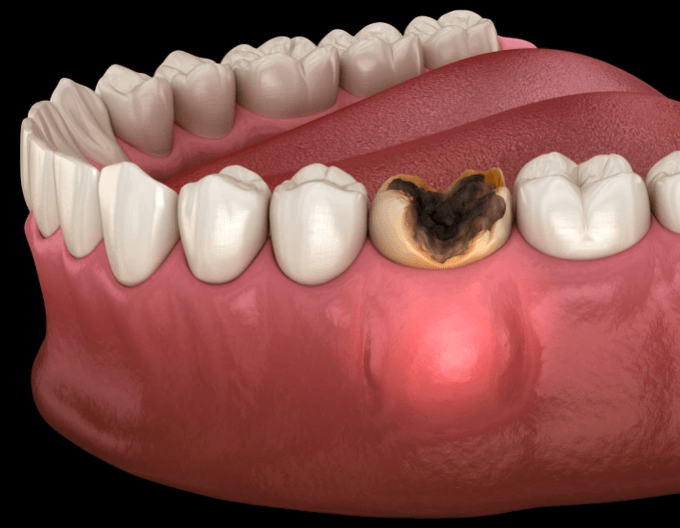
What Are The Advantages Of Abscess Drainage?
Abscess drainage is a crucial dental procedure that offers a range of benefits for individuals suffering from oral abscesses. By effectively addressing the infection and relieving associated discomfort, abscess drainage plays a significant role in maintaining oral health and overall well-being:
- Pain Relief: One of the most immediate and noticeable advantages of abscess drainage is the relief from intense pain. The pressure caused by the accumulated pus can lead to severe pain and discomfort. Draining the abscess releases this pressure, providing rapid relief and allowing you to resume your daily activities without the hindrance of constant pain.
- Reduced Swelling and Inflammation: Abscesses often cause swelling and inflammation in the affected area. Drainage helps to reduce these symptoms by eliminating the source of infection. This not only improves your physical comfort but also contributes to a more aesthetically pleasing appearance.
- Prevention of Complications: Left untreated, an oral abscess can lead to various complications, such as the spread of infection to neighboring tissues, bones, or even into the bloodstream. By draining the abscess, these risks are significantly minimized, preventing the infection from causing more extensive damage.
- Faster Healing: Abscess drainage facilitates the body’s natural healing process. With the source of infection removed, the body can focus its resources on repairing the affected tissues, allowing for faster healing and recovery.
- Preservation of Oral Structures: An untreated abscess can damage surrounding teeth, gums, and bones. By undergoing drainage, you protect these vital oral structures from the destructive effects of infection, ultimately preserving your oral health.
Abscess drainage is a valuable dental procedure that offers numerous advantages for individuals dealing with oral abscesses. Addressing the issue early through abscess drainage can lead to a quicker recovery and minimize the potential impact on your overall health. If you have further questions about draining an abscess, please contact us.
What Are The Risks If I Do Not Get An Abscess Drained?
Choosing to ignore or delay treatment for an oral abscess can have serious consequences for both your oral health and overall well-being. Abscesses are not merely uncomfortable nuisances; they are infections that, when left untreated, can lead to a range of complications that extend far beyond the mouth:
- Infection Spread: One of the primary risks of not getting an abscess drained is the potential for the infection to spread. Abscesses contain bacteria and pus that can infiltrate surrounding tissues, bones, and even enter the bloodstream. This can result in a more widespread and severe infection known as sepsis, a life-threatening condition that requires immediate medical attention.
- Facial Cellulitis: Infections can also spread to the face, causing facial cellulitis. This condition presents as significant facial swelling, often accompanied by pain and fever. If not addressed promptly, facial cellulitis can have serious implications for your health and appearance.
- Abscess Bursting: While some small abscesses may rupture on their own, allowing pus to drain, this is not a controlled or safe process. Ruptured abscesses can lead to the spread of infection and complications that may be difficult to manage without proper medical intervention.
- Tooth and Bone Damage: The infection from an abscess can weaken and damage the surrounding teeth and bone structures. This can lead to tooth loss, bone deterioration, and the need for more extensive dental procedures, such as extractions or bone grafts.
- Systemic Complications: The bacteria from an oral abscess can enter the bloodstream and potentially affect other parts of the body, including the heart and joints. This can lead to serious health conditions, such as endocarditis (heart infection) or septic arthritis (joint infection).
- Chronic Infection: In some cases, an untreated abscess can develop into a chronic infection that persists for an extended period. Chronic infections are more challenging to treat and can cause ongoing discomfort, pain, and immune system strain.
- Prolonged Pain and Discomfort: Without drainage, an abscess can continue to cause severe pain, discomfort, and difficulty in eating, speaking, and carrying out daily activities.
The risks associated with not getting an abscess drained are far-reaching and can impact both your oral health and overall quality of life. To avoid the potential complications that an untreated abscess can bring, it’s crucial to seek prompt dental care if you suspect you have an abscess or are experiencing any of the associated symptoms. If you have further questions about draining an abscess, please contact us.
What Are The Alternative Treatments If I Do Not Choose Abscess Drainage?
If you’re hesitant about undergoing abscess drainage or if it’s not deemed suitable for your situation, there are alternative treatments and management strategies that your dentist may recommend:
- Antibiotics: If the abscess is not causing severe pain or discomfort, your dentist might prescribe antibiotics to control the infection. Antibiotics can help reduce inflammation and stop the spread of bacteria. However, they might not completely resolve the abscess, and the infection could return if the underlying issue isn’t addressed.
- Tooth Extraction: In cases where the affected tooth is extensively damaged and the infection cannot be effectively managed, your dentist might recommend tooth extraction. Removing the source of infection can prevent it from spreading further.
- Root Canal Treatment: If the abscess is associated with a tooth infection, a root canal procedure might be considered. This treatment involves removing infected pulp from the tooth’s root canal and sealing it to prevent further infection.
It’s important to discuss your concerns and preferences with your dentist so that they can tailor a treatment plan that aligns with your needs and priorities. If you have further questions about draining an abscess, please contact us.
Cost of Incision & Drainage
Abscess Drainage, also called Incision and Drainage, costs $131 to 287 depending on if the abscess is localized to soft tissues only or if it extends deep into the bone. The codes relevant to abscess drainage in the Ontario Dental Association’s Suggested Fee Guide appear as follows:
Surgical Incision and Drainage and/or Exploration, Intraoral Soft Tissue
- 75111 – Intraoral, Surgical Exploration, Soft Tissue: $131
- 75112 – Intraoral, Abscess, Soft Tissue: $131
Surgical Incision and Drainage and/or Exploration, Intraoral Hard Tissue
- 75121 – Intraoral, Abscess, Hard Tissue, Trephination and Drainage: $287
- 75122 – Intraoral, Surgical Exploration, Hard Tissue: $287
Abscess drainage is generally considered a basic service and should be covered by your dental insurance. Be sure to find out from your dental insurance plan provider how much you are eligible for before going ahead with dental treatment. Our fees are consistent with the ODA Fee Guide.
For patients without dental insurance, Atlas Dental is pleased to offer dental financing through Dentalcard. Affordable payment plans start at 7.95% for terms of 6 months to 6 years. To learn more about Dentalcard dental treatment financing, follow this link.
What Are The Steps In The Abscess Drainage Procedure?
Dental professionals follow a specific set of steps to ensure the abscess is effectively drained and treated, minimizing the risk of complications:
- Patient Evaluation: The process begins with a thorough evaluation of the patient’s oral health. The dentist will assess the affected area with a dental x-ray image, taking into consideration the size and location of the abscess, as well as any accompanying symptoms.
- Local Anesthesia: Before proceeding with drainage, the dentist will administer local anesthesia to numb the area. This ensures that the patient remains comfortable throughout the procedure and minimizes any potential pain or discomfort.
- Creating an Incision or Puncture: The dentist will create an opening in the abscess to allow the pus to drain out. This can be done by making a small incision in the gum or by puncturing the abscess with a sterile needle. Creating this opening relieves the pressure within the abscess and allows the accumulated pus to escape.
- Cleaning and Irrigation: Once the pus has been drained, the area is cleaned and irrigated to remove any remaining debris and bacteria. Irrigation with a sterile saline solution helps ensure that the infection is thoroughly flushed out.
- Dressing and Medication: In some cases, a dressing or packing material may be placed in the abscess cavity to aid in further drainage and promote healing. Antibiotics or antimicrobial mouth rinse may also be prescribed to control the infection.
- Post-Procedure Care: After the procedure, the dentist will provide instructions for proper post-operative care. This typically includes information on how to keep the area clean, manage any discomfort, and prevent infection during the healing process.
- Follow-Up Treatment: Depending on the severity of the abscess and the patient’s response to treatment, follow-up appointments may be scheduled to monitor the healing progress. Any further treatment such as root canal therapy or tooth removal can be determined during these appointments.
By following these steps, dental professionals can provide relief from pain, promote healing, and prevent the infection from spreading. If you suspect you have an oral abscess or are experiencing symptoms, it’s important to seek prompt dental attention to determine the appropriate course of treatment. For more information about draining an abscess, please contact us.
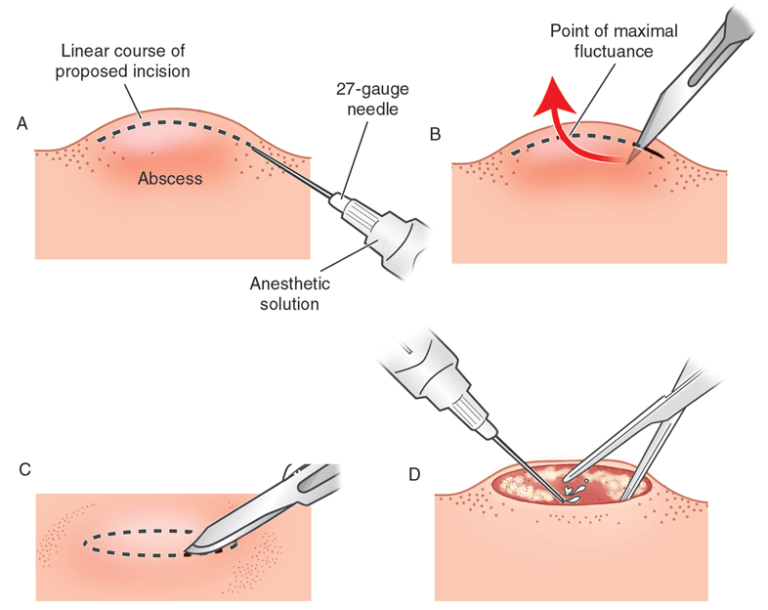
Can I Have Abscess Drainage If I Am Pregnant?
Pregnancy is a time of heightened caution when it comes to medical procedures and treatments. Dental health is no exception, as oral infections and abscesses can potentially impact both the mother and the developing fetus. If you are pregnant and suspect you have an oral abscess, it’s essential to consider the potential risks and benefits of abscess drainage:
- Assessment and Consultation: If you are pregnant and experiencing symptoms of an oral abscess, it’s crucial to consult your dentist or healthcare provider promptly. They will evaluate the severity of the abscess and consider the potential risks associated with leaving the infection untreated versus the risks associated with undergoing an abscess drainage procedure.
- Local Anesthesia and Medications: Local anesthesia, commonly used during abscess drainage, is generally considered safe during pregnancy. However, some dental procedures may require the use of additional medications or antibiotics. Your dentist will carefully evaluate the necessity of any medications and their potential impact on your pregnancy before proceeding.
- Timing and Trimesters: The timing of the procedure is an important consideration. In general, dental treatments, including abscess drainage, are often safer during the second trimester of pregnancy. During this time, the risks to the developing fetus are minimized, and the mother’s comfort can be better managed.
- Minimizing Risks: Dental professionals will take extra precautions when performing procedures on pregnant patients. They will aim to minimize any potential risks to both the mother and the baby. This might include adjusting the position of the patient during the procedure to ensure comfort and safety.
- Consultation with Healthcare Providers: Before undergoing abscess drainage or any other dental procedure, it’s recommended that pregnant individuals consult with their obstetrician or healthcare provider. This collaboration ensures that all aspects of your health and pregnancy are considered, and any potential concerns are addressed.
- Alternative Treatments and Management: In some cases, dental professionals might recommend alternative treatments or management strategies for pregnant patients with oral abscesses. These could include prescribing antibiotics to control the infection or providing guidance on maintaining good oral hygiene to prevent the abscess from worsening.
Pregnancy adds an extra layer of consideration when it comes to abscess drainage. The decision to proceed with the procedure will depend on various factors, including the severity of the abscess, your overall health, and the guidance of your healthcare providers. Always communicate openly with your dentist and healthcare team to ensure the best possible outcome for both your oral health and your pregnancy. If you have further questions about draining an abscess, please contact us.
What Are Common Problems With Getting An Abscess Drained?
While abscess drainage is generally a safe and effective procedure, there can be certain complications or challenges that may arise. Here are some common problems that can occur during or after abscess drainage:
- Incomplete Drainage: In some cases, the abscess drainage might not be entirely successful, leading to incomplete removal of pus. This can result in the persistence of symptoms and the need for further treatment.
- Recurrence of Abscess: Even after successful drainage, there’s a small chance that the abscess might return. This could be due to factors like ongoing infection or an underlying dental issue that wasn’t fully addressed.
- Post-Procedure Discomfort: Some discomfort, pain, and swelling are common after the procedure. However, excessive or prolonged discomfort could be a sign of an issue, such as infection, that needs to be addressed.
- Infection Complications: While rare, there is a risk of infection after the drainage procedure. Proper aftercare, including keeping the area clean and following any prescribed instructions, is crucial to minimize this risk.
- Bleeding: A small amount of bleeding is normal after abscess drainage, but if the bleeding is excessive or persistent, it may require further attention. Applying gentle pressure with a clean cloth or gauze can often stop minor bleeding.
- Swelling or Bruising: Swelling and bruising around the treated area are common after abscess drainage, but if they become excessive or don’t improve, it’s important to consult your dentist.
- Damage to Nearby Structures: While rare, there’s a slight risk of damaging nearby oral structures during the drainage procedure. Dental professionals use their expertise to minimize this risk.
Dental professionals are skilled in managing these situations and will work to ensure that the procedure is as safe and successful as possible. If you experience any unusual or concerning symptoms after undergoing abscess drainage, don’t hesitate to contact your dentist for guidance and support. For more information about draining an abscess, please contact us.
We also think you’ll like…
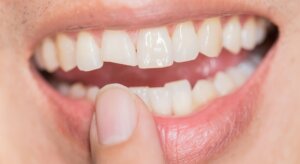
Cracked Tooth
Cracked Tooth What Is A Cracked Tooth? A Cracked Tooth is a common dental problem that can happen to anyone at any age. It occurs
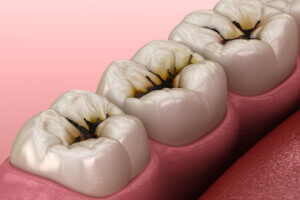
Reversible Pulpitis
Reversible Pulpitis What Is Reversible Pulpitis? If you’ve ever experienced a sharp, fleeting toothache when indulging in your favorite ice cream or a hot cup
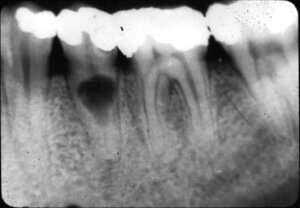
Internal Root Resorption
Internal Root Resorption What Is Internal Root Resorption? Internal root resorption occurs when there is an unusual breakdown of the tooth’s internal structure, particularly within

Antibiotic Prescription For Dental Infection
Antibiotic Prescription For Dental Infection What Are Antibiotics For Dental Infection? When it comes to your oral health, there are instances where dental infections can

Irreversible Pulpitis
Irreversible Pulpitis What Is Irreversible Pulpitis? If you’ve ever experienced a sudden, sharp, and persistent toothache, you may be experiencing “Irreversible Pulpitis.” This dental condition,
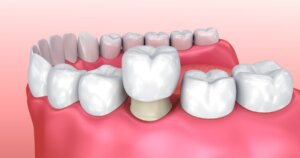
Dental Crown Recementation
Dental Crown Recementation What Is Dental Crown Recementation? Dental Crowns, often referred to as “caps,” play a crucial role in restoring both the appearance and

